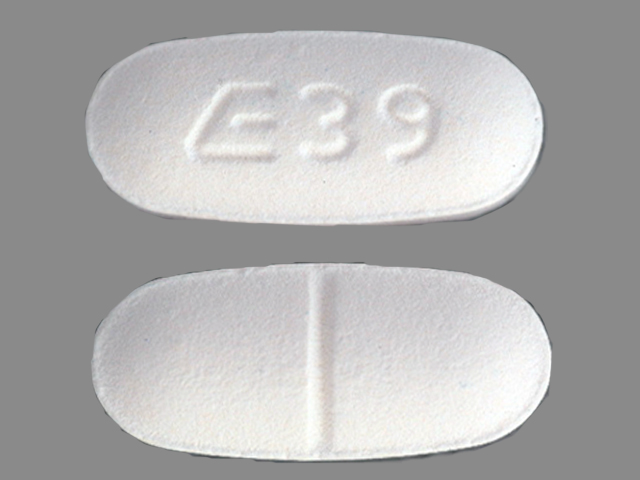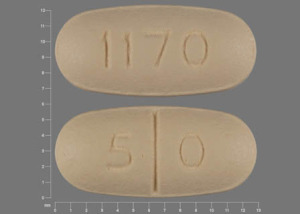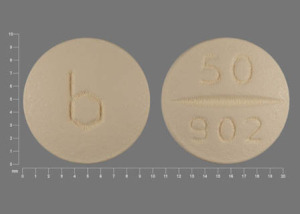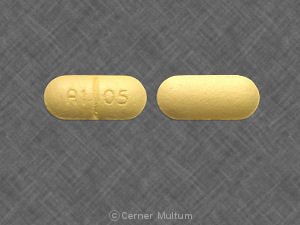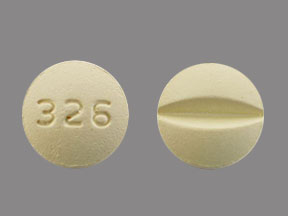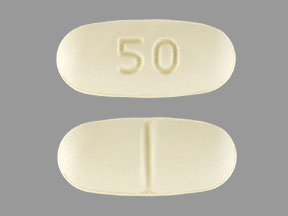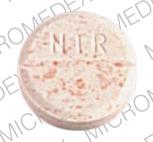
What is Naltrexone?
Naltrexone is a prescribed medication that is used to treat alcohol dependence and addiction to opioids. It can help you quit using the substances and stay free of them.
Naltrexone is a member of a class of drugs referred to as opioid antagonists. They work by blocking the opioid receptor. It reduces the effects caused by alcohol and opioid drugs and prevents the toxicity the substances can cause.Naltrexone is available as an intramuscular extended-release injection (Vivitrol) and also as tablets for oral use. The brand-name versions of tablets containing naltrexone (Revia and Depade) were discontinued; however, generic versions are still available.
Naltrexone tablets were approved in 1984 by the US Food and Drug Administration (FDA). In 2006, the FDA approved Vivitrol. The FDA has also approved Vivitrol, which is the extended-release intramuscular injectable version of naltrexone.
What are the uses of naltrexone?
Naltrexone is a prescribed medication that is used to:
- To manage alcohol dependency
- To reduce the effects of the exogenously administered opioids. So as to avoid the relapse into addiction to opioids following detoxification.
- It is suggested to stop using opioids or drinking alcohol before beginning the Naltrexone.
Naltrexone hydrochloride should not be used by children or adolescents younger than 18 years old.
Important information
Naltrexone could cause serious adverse reactions, such as:
- A risk of opioid overdose
It is possible to overdose accidentally in two different ways.
- Naltrexone inhibits the action of opioids. Don't take large doses of opioids, even opioid-containing medications like heroin and prescription pain medications, to combat the effects of opioids that block this drug. This could result in serious injuries, comas, or even death.
- Once you have received an extended-release version of this drug, the effect of blocking diminishes until it completely disappears as time passes. If you've taken street drugs containing opioids or other opioid-containing medications in the past, taking the same amount of opioids as were used prior to treatment may result in death or overdose. It is also possible that you are more susceptible to the negative effects of fewer opioids.
- After you've completed the process of detoxification
- When your next naltrexone injection is due
- If you fail to take the prescribed dosage of the medication,
- when you stop taking naltrexone
It is essential to inform your family members and close ones about this higher vulnerability to opioids and the danger of overdose.
If you or someone near you should dial 911 or seek medical emergency help immediately if you:
- Are you having difficulties breathing?
- get very sleepy due to slowed breathing.
- are breathing shallowly and slowly. (little breathing movements with the chest)
- Feel faint and dizzy. feel confused, faint, or suffer from unusual symptoms.
Discuss with your physician the use of naloxone. It is a medication that can be administered to patients in the event of an immediate treatment of opioid overdoses.
Contact 911 or seek urgent medical assistance immediately in all instances of known or suspected opioid overdoses, even if naloxone was used.
- Extreme reactions at the site of Naltrexone injection (injection site reactions)
There have been cases of severe reactions to injection sites, such as tissues dying (necrosis) during naltrexone injections. Certain of these injection-site reactions require surgery. This medication should be administered by a medical professional. Speak with your doctor right away If you notice one of these symptoms in the area of injection:
- Extreme pain
- The area is hard to feel.
- Vast expanse of swelling
- Lumps
- Blisters
- An open wound
- A dark scab
Inform your doctor about any reaction you experience at the injection site that you are concerned about, that becomes worse over time, or that is not better within two weeks following the injection.
- Sudden withdrawal of opioids
Any person receiving naltrexone is required to not take any kind of medication that contains opioids (must be non-opioid), such as street medications, prescription pain medications, cough, cold, or diarrhoea medications that contain opioids, or treatment for opioid dependence like methadone or buprenorphine, for a minimum of 7–14 days prior to taking this medication. Opioids used in the seven to 14 days prior to when you begin receiving treatment could cause sudden symptoms of withdrawal after you start receiving treatment. The withdrawal symptoms that occur suddenly could be very severe, and you may have to be admitted to a hospital.
It is essential to be completely free of opioids before receiving naltrexone, unless the doctor decides that you do not require detoxing first. Your doctor could instead choose to prescribe this drug at a medical centre that treats you for abrupt withdrawal from opioids.
- Hepatitis or liver damage Naltrexone is a drug that can result in liver problems or hepatitis.
Inform your doctor if you are experiencing any of the following signs of liver issues while taking this medication:
- Stomach pains that last for over two days
- Dark urine that is dark
- Yellowing of the whites of your eyes
- Tiredness
Your doctor may have to stop prescribing this medication if there are symptoms or signs of a severe liver condition.
It is essential to inform each doctor who is treating you that you're taking Naltrexone. Anaesthetics without opiates should only be utilised if you require an anaesthetic in a critical situation. If you are required to make use of anaesthetics containing opiates, it is possible that you will require more doses than you normally do. It is also possible that you will be more susceptible to negative effects (breathing problems and circulatory issues).
Who is not a candidate for naltrexone?
Use naltrexone only in the following situations:
- Use or are suffering from an addiction to opioid-containing medications or opioid street drugs.
To determine if you suffer from an addiction to opioids, your physician could give you a tiny injection of a drug known as Naloxone. It is referred to as a challenge test. If you experience symptoms of withdrawal due to opioids after the naloxone test, avoid starting treatment with naltrexone until the moment is right. Your physician may conduct the test once you have stopped using opioids to determine how safe it would be to take the treatment. - You are experiencing withdrawal symptoms due to opioids. The withdrawal symptoms of opioids can occur after you've regularly taken them before stopping.
The symptoms of withdrawal from opioids could include:- anxiety
- insomnia
- It's time to stop yawning.
- febrile
- sweating
- tears
- nasal, runny nose
- goosebumps
- Shaking
- Hot or cold flushes
- The muscles are aching.
- Muscle moves
- anxiety
- nausea and vomiting
- diarrhoea
- stomach cramps
Discuss with your healthcare provider if you experience any of these signs prior to beginning this medication.
- Are you taking methadone?
- Have liver issues that are severe or acute hepatitis
- Suffer from severe kidney issues.
- You are allergic to naltrexone or any of the components in the formulation that you are using or the liquid mixed to make it with injectable forms (diluent). Below is a full list of the ingredients.
Before you take this drug
Before receiving naltrexone, consult your physician to determine whether you:
- Are suffering from liver problems.
- Use or abuse of street (illegal) or illicit drugs
- Suffer from haemophilia or other bleeding problems.
- Suffer from kidney issues.
- Are suffering from any other medical condition.
- Are dependent on alcohol and also use opioids.
How to take Naltrexone?
Utilising opioids within the 7–14 days prior to when you start receiving naltrexone can cause sudden signs of withdrawal. To avoid this, it is recommended to not take opioids for a minimum of 7–10 days prior to beginning treatment with naltrexone.
How do you take naltrexone tablets?
- Make sure to take the medicine exactly as your doctor instructed you to. Consult your physician or pharmacist if you are not certain.
- You should take this medication every day, or according to what your doctor has instructed you to.
- The duration you are required to take this medication for will be determined by your physician. The standard duration of treatment is 3 months. In certain circumstances, it is possible to extend the duration of treatment, which could be beneficial.
What is the procedure to receive an injection of naltrexone?
- Your injection will be administered by a doctor approximately once per month.
- Don't attempt to inject yourself with this drug. Reactions that are serious, and some that could require hospitalisation, may occur.
- Naltrexone can be administered as an injection into the muscles of your buttocks with a specific needle included with it.
- When this medication is injected, it will last for a month. It cannot be eliminated completely from your body.
If you require medical attention, ensure that you inform the healthcare professional who is treating you that you're receiving this medication. Also, mention when you last received your dose. This is crucial because naltrexone is also able to block the effects of opioid-based medications that may be prescribed to patients suffering from cough, pain, or diarrhoea.
Keep a notepad in your pocket every time you go out to inform health professionals that you are taking this medication so they can properly treat you in an emergency. Ask your doctor about an ID card that you can carry along.
What happens If I Miss a dose?
If you have forgotten that you have taken your Naltrexone tablets, make sure you take them as quickly as you can. But if it's close to the time for your next dose, avoid any missed doses and return to the regular schedule. Don't take a second dose to cover an unintentional dose.
If you don't make it to your appointment to receive your naltrexone injection, make another appointment as quickly as you can.
What happens If I overdose?
If you're taking more naltrexone tablets than you ought to, inform your doctor or pharmacist, or call the nearest emergency department at your hospital immediately.
What should be avoided?
Avoid driving a vehicle, operating machinery, or performing other hazardous actions until you are aware of the effects this medication has on you. Naltrexone can cause you to feel tired and dizzy.
Details on dosage
Tablets:
- Alcoholism: The recommended dosage is 1 tablet (50 mg) every day.
Intramuscular injection:
- The recommended dosage is naltrexone, 380 mg given intramuscularly (IM) via an injection into the gluteal region, once every four weeks or every month, with alternating buttocks every subsequent month.
Read the complete prescribing guidelines for more information on the dosing of naltrexone.
Side effects of Naltrexone
The most serious side effects of the drug include:
- Check out the 'Important Information section above.
- Depression. Sometimes, it can lead to suicide, suicidal ideas, or suicidal behaviors. Be sure to inform your family members and those closest to you who take this medicine.
Family members, you or your closest family members should contact your physician immediately in the event that you develop depression or exhibit any of the signs of depression, especially in the case of new symptoms or more severe symptoms, or if they worry you:- You are sad or experience tears or crying spells.
- You're no longer looking forward to seeing your friends or taking part in activities you used to love.
- You're sleeping more or less than normal.
- You are feeling helpless and hopeless.
- You're more angry than normal.
- You're either much or little hungry than normal or notice a significant variation in your body weight.
- You aren't paying attention.
- You are exhausted or sluggish throughout the day.
- You're thinking of harming yourself or taking your life.
- You experience hallucinations.
- Pneumonia. A few people receiving this treatment have suffered from the specific type of pneumonia that results from the occurrence of an allergy. If this happens to you, there is a possibility that you will need to be taken to the hospital. Inform your doctor immediately if you experience any of these symptoms while you are being treated with naltrexone.
- breathing problems or wheezing
- coughing that isn't going completely
- Allergic reactions that are serious Allergic reactions that are severe can occur within hours or shortly after a naltrexone injection. Contact your physician or seek medical attention immediately if you experience any of these signs of an allergic reaction that is serious.
- Skin itchy rash
- swelling of your eyes, face, mouth, or tongue
- Trouble breathing or wheezing
- chest pain
- Feeling faint or dizzy
Common negative side effects of naltrexone include:
- Nausea. Nausea can occur at the beginning of this medication, but it will improve with time.
- Vomiting
- Insomnia
- Anxiety
- Headache
- Insanity
- Nervousness
- Abdominal discomfort
- Painful joints
- Muscle pain and cramps
- Weak spots
- Diminished appetite
- Heart palpitations
- An increase in heart rate
- ECG changes
- Libido disorders
- Thirst
- Dizziness
- Increase tear secretion
- Chest pain
- Diarrhoea
- Constipation
- It is a rash.
- Erectile dysfunction and delayed ejaculation
- More energy
- Irritability
- Increased sweating
- Affective disorders
- Cold symptoms
- Difficulty sleep
- Toothache
Contact your healthcare provider. If you experience any side effects that bother you or do not disappear,this is not the only negative side effect associated with this medication. For more details, consult your physician or pharmacist.
Contact your doctor to seek medical advice on adverse effects. You can report adverse reactions to the FDA at 1-800-FDA-1088.



